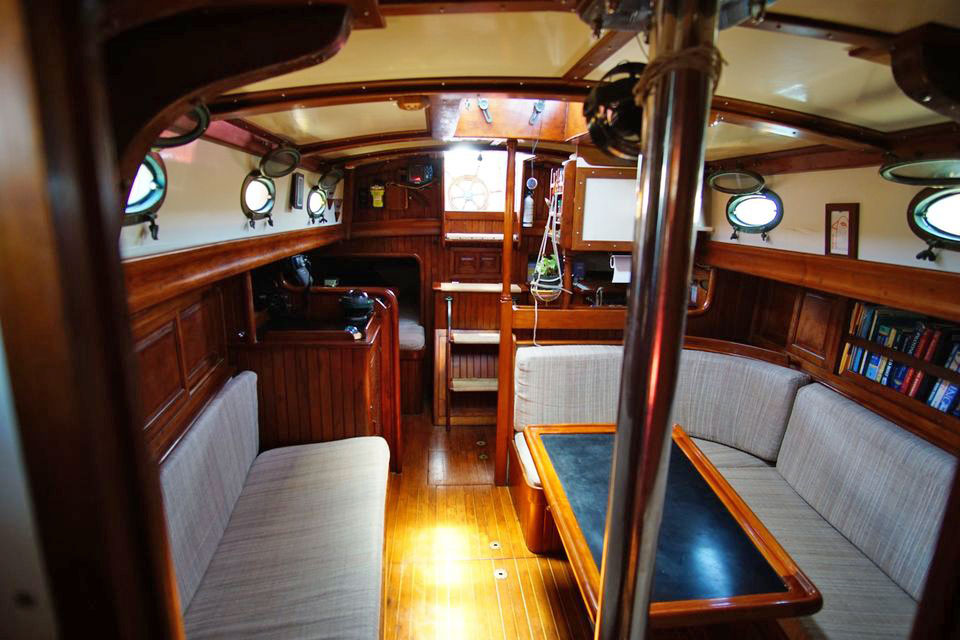In a Nutshell…
The distinction between a deck-stepped and a keel-stepped mast is pivotal in sailing, impacting not just installation but overall boat performance and maintenance. A deck-stepped mast, while easier to manage, may sacrifice cabin space, whereas a keel-stepped mast offers superior structural integrity crucial for offshore sailing. Sailors need to weigh these factors depending on their sailing aspirations.
Table of Contents
Overview of Mast Designs
Deck-Stepped Masts: Practicalities Explored
Keel-Stepped Masts: An Insight into Strength
Spotting the Differences: A Quick Reference
FAQs on Mast Types
Overview of Mast Designs
The mast serves as the backbone of a vessel’s sailing mechanism, providing crucial support for the sails that propel the boat forward. The connection of the mast to the boat’s structure, either through the deck or directly into the keel, significantly influences not just handling but also the performance standards of the vessel.
With a wealth of experience in the sailing industry, GetBoat recognizes the importance of choosing the right mast type, ensuring that the enjoyment of your time on the water is not hampered by equipment failure. The freedom of sailing is at the forefront of this decision, as every navigator deserves the best equipment for memorable journeys.
Deck-Stepped Masts: Practicalities Explored
A deck-stepped mast is mounted directly onto the vessel’s deck, supported by a compression post or a robust bulkhead. This design is frequently found on modern cruising boats and offers multiple advantages conducive to ease of use.
Advantages & Disadvantages of Deck-Stepped Masts
Advantages:
Easy Installation & Unstepping: The straightforward process of mast stepping appeals to boat owners seeking flexibility for winter storage or transport.
Minimized Water Leaks: The design minimizes leaks as the mast base is sealed directly on the deck.
Interior Space: This configuration often leads to more cabin space, enhancing comfort onboard.
Cost-Effectiveness: Deck-stepped masts generally come at a lower initial investment compared to their keel-stepped counterparts.
Disadvantages:
Structural Load Focus: The mast’s compression concentrates on the deck, potentially creating weak points if not properly engineered.
Tuning Challenges: Flexibility in the deck under load can complicate achieving an optimal rig tune, affecting sail performance.
Risk in Emergencies: In the event of dismasting, damage to the deck can be significant, often requiring extensive repairs.
Keel-Stepped Masts: An Insight into Strength
On the other hand, a keel-stepped mast extends through the deck and connects directly to the keel or a solid structural grid. This design ensures enhanced safety and performance, making it a popular choice for serious offshore endeavors.
Advantages & Disadvantages of Keel-Stepped Masts
Advantages:
Enhanced Structural Integrity: The direct connection to the keel distributes loads effectively throughout the hull, ensuring a stronger rig.
Optimal Rig Tuning: These masts allow for more precise rig tuning, vital for maintaining efficient sail shape and performance.
Increased Safety: In dismasting scenarios, the likelihood of minimal deck structure damage enhances safety on board.
Disadvantages:
Leak Potential: The deck-mount point presents a higher risk for water ingress, necessitating meticulous sealing and maintenance.
Complex Installation: The installation process for a keel-stepped mast is typically more involved and costly, often requiring specialized personnel.
Space Constraints: This design can occupy significant interior space, influencing the cabin layout and usability.
Spotting the Differences: A Quick Reference
Feature | Deck-Stepped Mast | Keel-Stepped Mast |
Mast Base Location | On the deck | On the keel or structural grid |
Interior Impact | No mast inside, may have a compression post | Mast passes through the cabin |
Ease of Removal | Easier & less expensive | More complex & costly |
Rigidity & Strength | Good, but deck may flex under load | Excellent, superior structural integrity |
Leak Potential | Low risk at mast base | Higher risk where it passes through the deck |
Typical Usage | Production cruisers, day sailors | Offshore racers & cruisers, performance yachts |
FAQs on Mast Types
Can a keel-stepped mast be converted to a deck-stepped mast? This conversion is highly complex and generally not advisable, as it risks structural integrity and lofty costs.
What is a mast boot? A mast boot is a seal that sits around the base of the mast to prevent water ingress into the cabin.
Does one type of mast affect the boat’s resale value? Yes, mast type can influence the perceived value, especially among performance-focused buyers.
Conclusión
An understanding of the differences in mast types is essential for sailors and potential boat rentals alike. Deck-stepped masts offer practicality, while keel-stepped masts provide strength and performance longevity. Whether sailing along picturesque coastlines or exploring tranquil lakes, having the right mast can significantly enhance the sailing experience. Exploring these differences could take your next seaside vacation to the next level with the right selection of vessel. Whether seeking adventure with friends or a romantic getaway, consider GetBoat.com for a seamless boat rental experience.
Planning Your Next Adventure
Understanding the nuances of mast types not only enhances sailing performance but can influence your boating experience. If you’re planning a trip to the sea, consider renting a boat to fully immerse yourself in local cultures and environments. Each inlet or bay has a unique story, complementing local flavors and architecture. Dive into your next seaside adventure with a boat rental from GetBoat.com – the ocean awaits!


